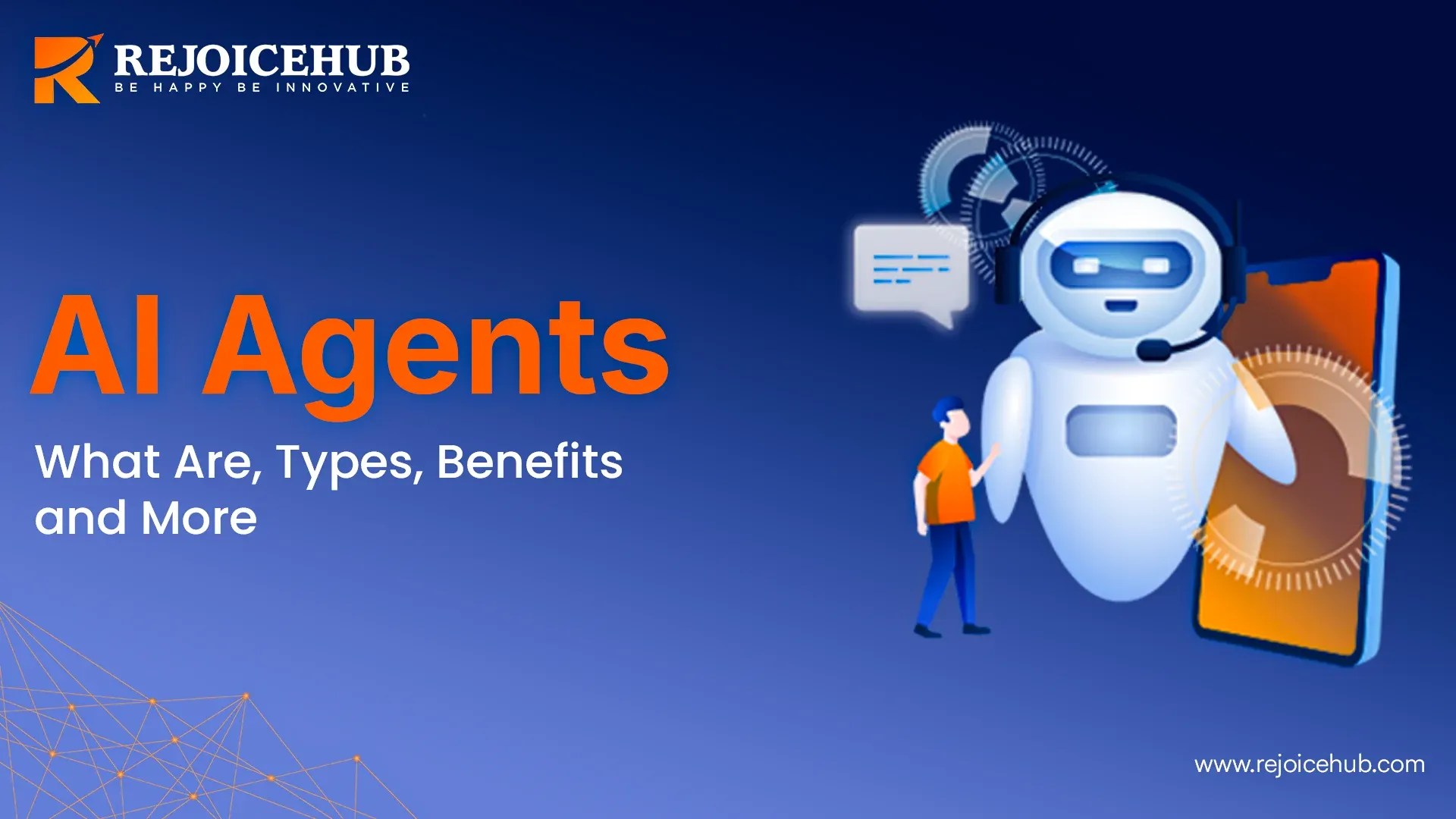
AI agent technology has stirred up interest in tech circles and mainstream chatter. Many wonder if these digital helpers are super-smart robots or just fancy code. The truth lies somewhere in between. AI agents sense their surroundings, make quick decisions, and handle tasks that once bogged humans down. They come in various shapes, sizes, and levels of complexity. Some are as simple as virtual shop assistants answering basic questions. Others are intricate problem-solvers running complex workflows with minimal fuss. They stand at a curious crossroads of machine learning, logic, and good old-fashioned computation. But the magic is not just tech fluff. The human angle matters. These agents can lighten workloads, reduce costs, and add more predictability to daily operations. As they grow in sophistication, it becomes essential to understand how they work, where they fit, and what they can do.
Quick Summary
It might seem complicated at first. AI agents juggle input, rules, and output with confidence. They watch the world, pick out patterns, and do something useful. They are not just random code snippets. They have logic, memory, and sometimes even the ability to learn. They can handle customer queries, schedule tasks, or sort through giant data sets. They are becoming part of normal business operations. For many, they represent an attempt to simplify decision-making. They turn raw data into actions and help people relax a bit. In short, AI agents serve as digital aides, saving time and resources.
What is an AI agent?
If you ever ask, "What are AI agents," you are wondering about entities in a system that observe their environment and then act to achieve their goals. Think of an AI agent as a digital worker that can handle defined tasks. It can react to changes, plan its next steps, and rely on coded logic to pick the best option. It is not human, of course, but it tries to mimic certain human decision patterns. This helps it fit into workflows that people used to handle manually.
What are the Main Principles that define AI agents?
Some core principles guide an AI agent. It must perceive its environment, determine what matters, and then decide how to respond. It should pick actions that lead to good outcomes. It must be flexible, not just a rigid script. Also, it should have a defined performance measure. It tries to do well according to that measure. These principles push an AI agent towards better results, not random guesswork.
How do AI agents work?
The inner workings can sound complex, but the gist is simple. An AI agent starts by observing data. It analyzes signals, searches for patterns, and compares what it sees with its knowledge. Then it decides what to do next. This decision process might involve rules, learned patterns, or both. After picking a course of action, it executes and then observes the outcome. Over time, it can refine its approach. This loop keeps it relevant and efficient.
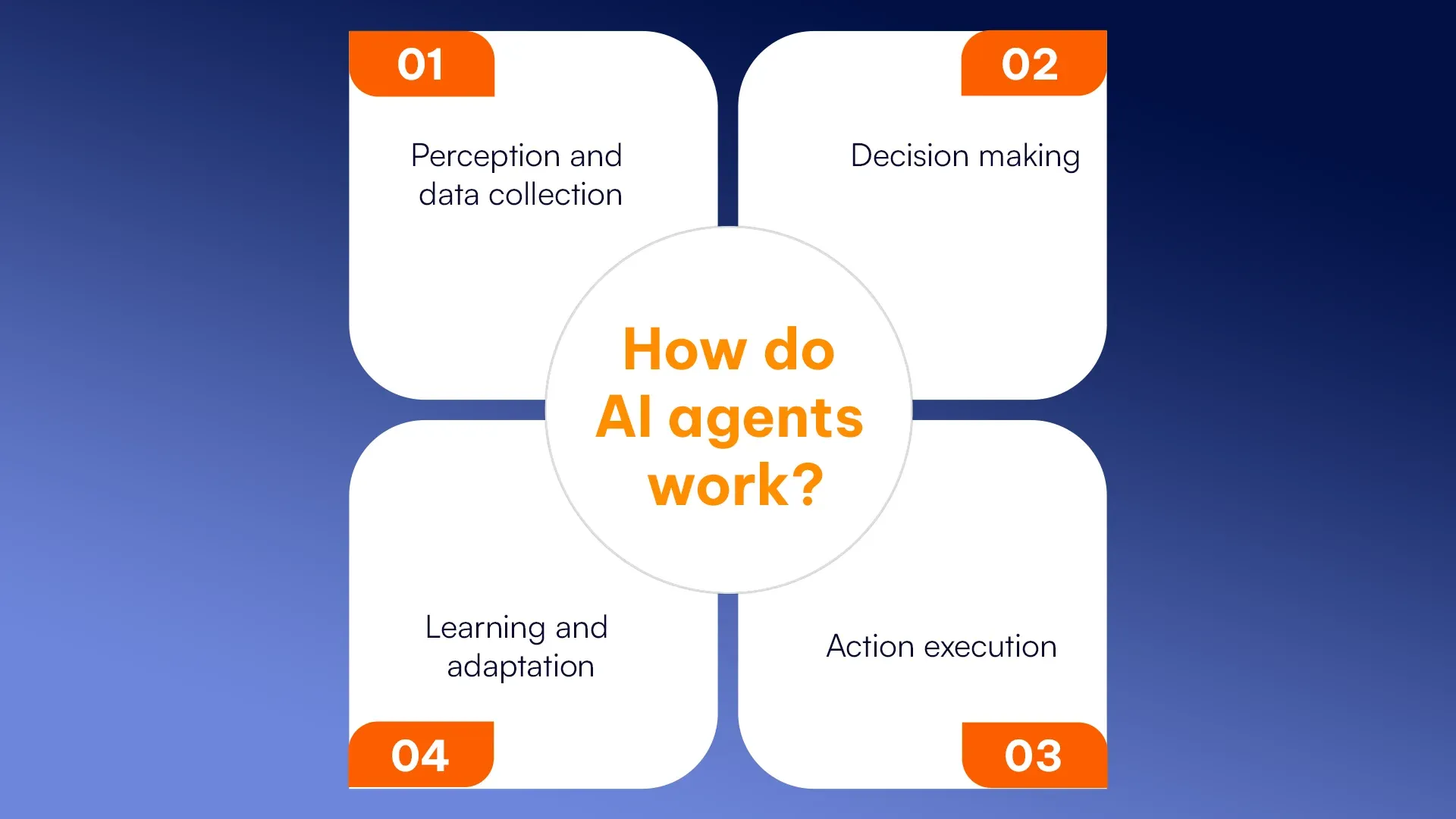
1. Perception and data collection
The first step involves sensing. AI agents watch, read, or listen to inputs. They might look at user queries, environmental sensors, or large data repositories. Perception is not passive. It is structured. The agent must filter out the noise and keep what matters. Good perception sets the stage for better decisions later.
2. Decision making
Once the agent knows what is going on, it must choose a path. This is where intelligence matters. The agent weighs options, forecasts outcomes, and picks what seems best. It might follow complex rules or guess based on patterns it learned before. Decision making is at the heart of any AI agent's skill set. Without good judgment, it is just a passive observer.
3. Action execution
Having chosen an action, the agent must carry it out. This might mean sending a response to a user, adjusting a machine setting, or triggering another software process. Action is where theory meets practice. The agent’s abilities become real when it takes that step and affects the environment.
4. Learning and adaptation
AI agent skills shine when the agent can improve with time. Learning means adjusting its internal model to do better next time. Maybe it made a bad call before. Now it sees why and won’t repeat it. Adaptation ensures that the agent does not grow stale. Instead, it keeps up with new data and changing conditions.
What are the types of AI agents?
There are various flavors. Some agents follow simple rules. Others incorporate models of the world. Some have clear goals. Others focus on utility values. Some even learn on the fly. Hierarchical agents divide tasks into levels. Each type has strengths and weaknesses. Understanding these differences is key.
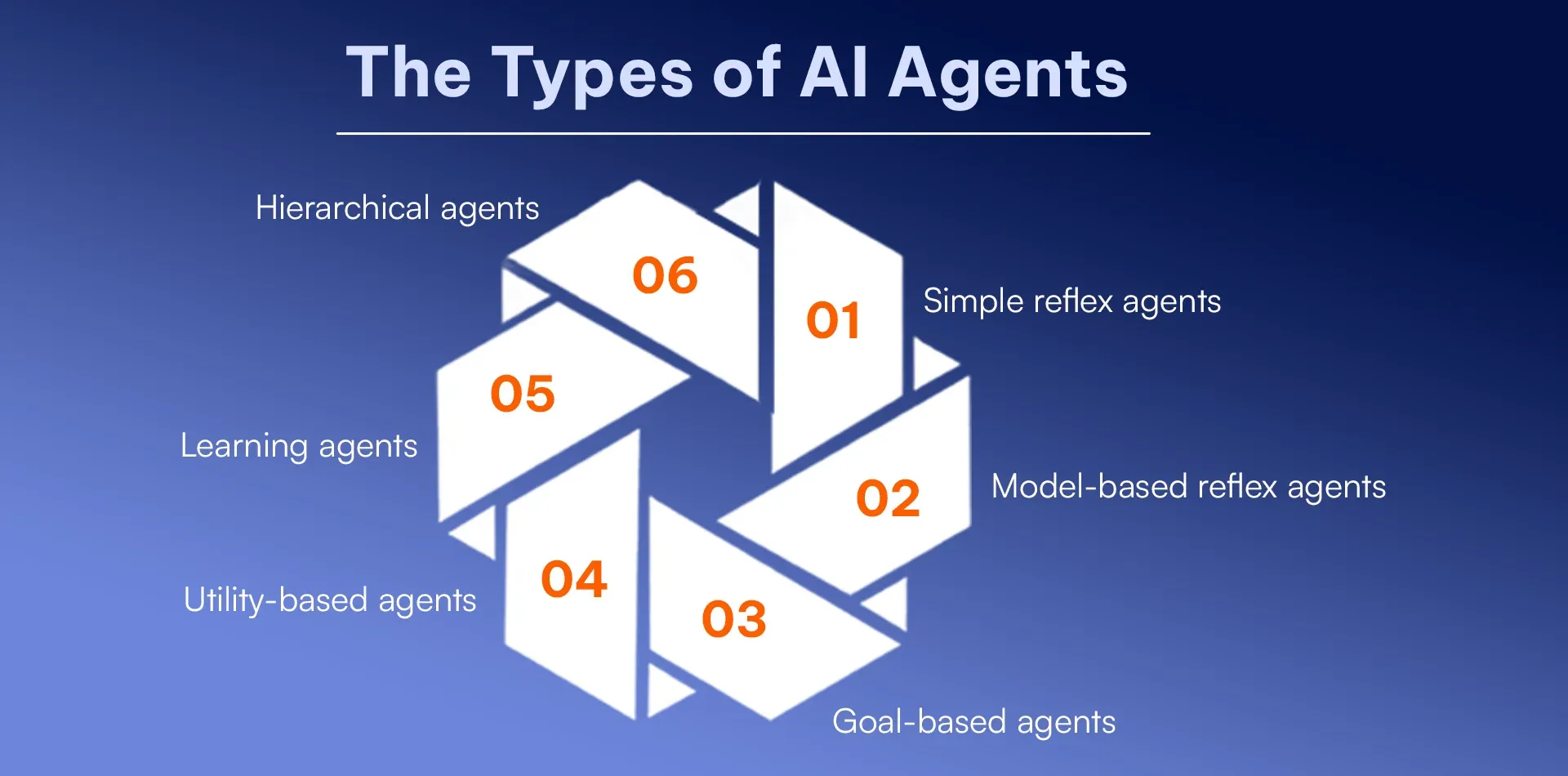
1. Simple reflex agents
These agents are the most basic. They respond directly to the present situation, ignoring the past or the future. They follow a set of predefined condition-action rules. No fancy reasoning here, just instant reactions. Think of a door that automatically opens when it senses motion.
2. Model-based reflex agents
These agents keep track of the world. They maintain an internal model to remember what happened before. This helps them handle situations that are not always clear. They can piece together fragments of current and past info to decide what to do next. This adds more depth to their logic.
3. Goal-based agents
Goal-based agents think beyond the immediate. They have a defined target they want to reach. They consider the steps needed to get there. They might explore different paths and pick the one that seems most likely to lead them toward the objective. Their focus is on the result.
4. Utility-based agents
These agents aim for maximum satisfaction. Instead of just having a binary goal, they measure how good each outcome is. They pick actions that promise higher utility. This might lead to smarter trade-offs. They are not just aiming for any solution, but the best possible one given the circumstances.
5. Learning agents
These agents refine themselves. They start with a basic idea and get better through practice. They learn from mistakes and rewards. Over time, they adjust their strategies, becoming more skilled at handling the tasks they face. This continuous improvement sets them apart from static agents.
6. Hierarchical agents
These agents break complex tasks into simpler parts. They structure their reasoning in layers. Each layer solves a chunk of the problem. The result is more manageable code, easier debugging, and clearer reasoning. They handle complexity by stacking the problem into smaller, more digestible pieces.
Also read: Artificial Intelligence Companies in India
What are the key components of AI agent architecture?
An AI agent runs on an architecture that holds all the machinery. This includes the computing platform, the rules or algorithms it follows, and the programs that translate perceptions into actions. The architecture gives it a stable frame. On top of this, we have the agent function and the agent program. These guide how the agent maps situations to actions.

1. Architecture
Architecture is the agent’s skeleton. It includes the hardware, software frameworks, and basic computational elements. Without this stable backbone, the agent could not run. It is the physical or virtual machine on which the agent’s logic sits.
2. Agent function
The agent function is a map from percept histories to actions. It describes how the agent should react to everything it observes. It is like a big instruction manual. Given a set of conditions, the agent function says what to do. It defines the logic that links perception to behavior.
3. Agent Program
The agent program is the actual code that implements the agent function. It runs on the architecture. It processes inputs, updates internal variables, and outputs decisions. The agent program turns theory into practice. It is how the agent lives and breathes in the digital world.
Benefits of using AI agents?
Before we get into the benefis of AI agens, let’s remember that they are about efficiency and getting good results with fewer headaches. They can handle tasks round the clock, reduce manual labor, and keep standards consistent. They can scale easily and give reliable outputs. They can also dig into data and extract insights that help people make smarter decisions. When handled well, they mean less repetition, more accuracy, and improved workflows. It is about better outcomes from fewer inputs.
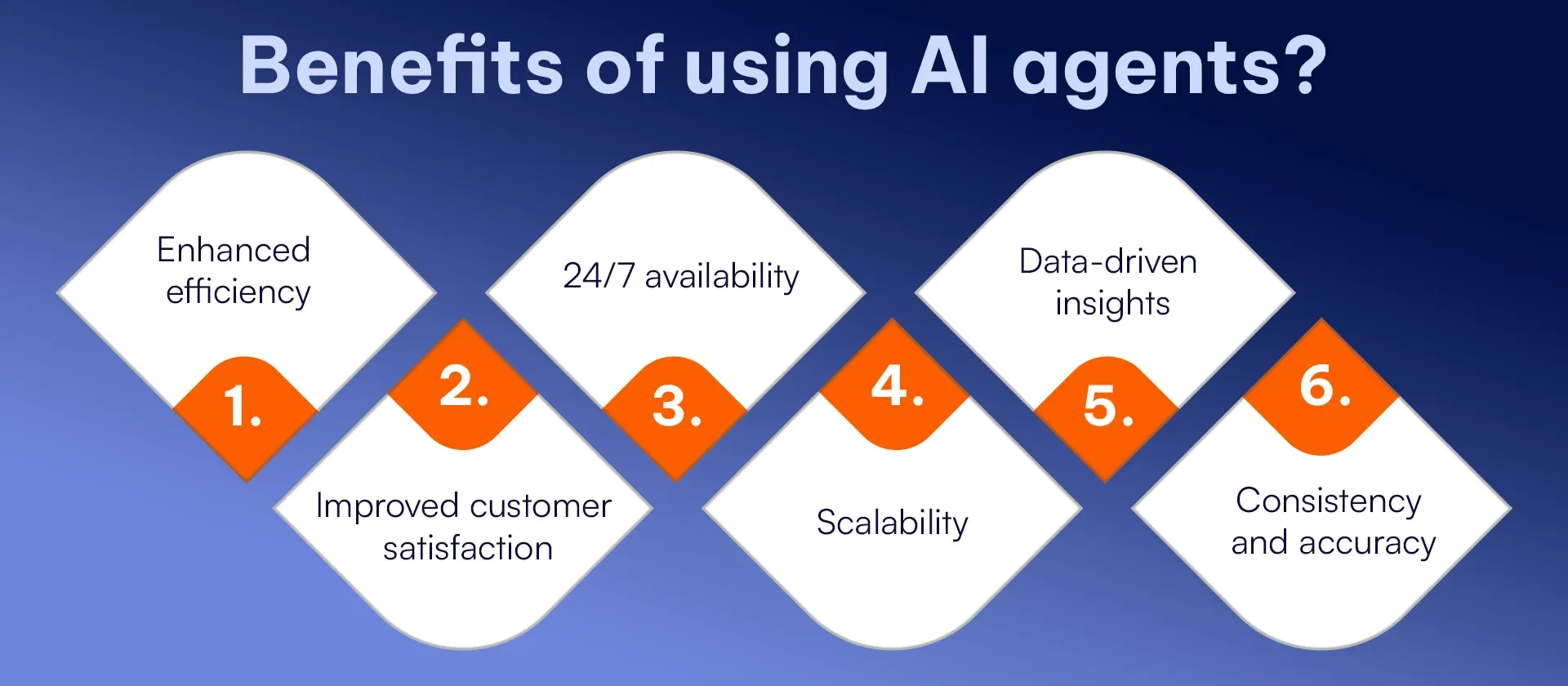
1. Enhanced efficiency
An AI agent does tasks quicker than humans. It can process large chunks of data without pausing for coffee breaks. It trims waiting times and cuts unnecessary steps. With the right rules, it does its job every time without losing focus or getting bored.
2. Improved customer satisfaction
When an AI agent handles customer queries, responses can be instant and steady. Customers get answers at any hour. No human mood swings. Just straight, helpful replies. This builds trust and keeps customers from running off to competitors.
3. 24/7 availability
AI agents do not sleep. They stay active and alert. The sun sets, but the agent keeps going. This helps businesses stay accessible across time zones. No more strict closing times. Queries get addressed whenever they pop up. That steadiness counts.
4. Scalability
When demand spikes, an AI agent can handle it. It just ramps up its processing, as long as resources allow. Humans would scramble to hire more staff. The agent just keeps going. This flexibility helps companies handle big workloads smoothly.
5. Data-driven insights
AI agents can scan through oceans of data. They notice patterns that might escape human eyes. They can flag trends or warn about issues. This helps managers make better choices. Data-based advice means fewer guesses and more grounded decisions.
6. Consistency and accuracy
Humans make random errors. AI agents stick to their rules. They give consistent responses and handle tasks the same way each time. This reduces variance and errors. It is like having an assistant who never forgets a step or misreads a chart.
Risks and limitations of AI agents
It’s not all sunshine. AI agents come with headaches. Sometimes they rely too much on specific data sets. Sometimes they run into loops or conflicts when interacting with other agents. Computational demands can surge. These issues must be understood and managed to prevent chaos.
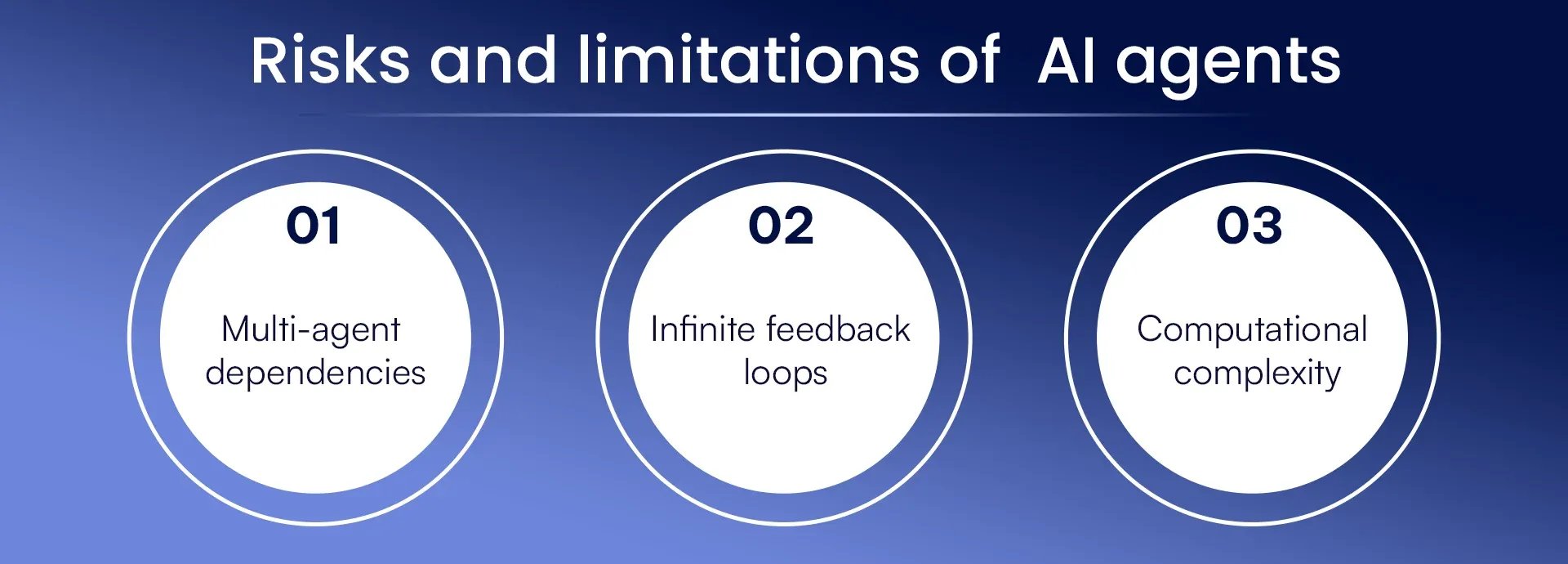
1. Multi-agent dependencies
In some systems, many agents interact. If one fails, the system might stagger. Dependencies chain them together. A single hiccup can trigger a domino effect. Balancing these interactions is tricky. Too many cooks can spoil the broth if not handled with care.
2. Infinite feedback loops
An AI agent might fall into a trap. Its actions might produce perceptions that lead it to repeat the same behavior endlessly. Without checks, it loops forever. This wastes resources and frustrates users. Detecting and breaking such loops is crucial.
3. Computational complexity
Some tasks require heavy computation. If the agent tries to handle massive datasets or complex models, it might slow down. Performance might drop. Finding efficient solutions is necessary. Otherwise, the agent becomes sluggish and less practical.
Conclusion
AI agents are not magical wizards, but they are also not mere code blocks. They are deliberate, logical constructs that can handle tasks with a certain flair. They sense, think, and act. They learn and adjust. They can answer customer queries at midnight and spot obscure trends in huge data logs. But they can also get stuck, waste resources, or cause new problems. Striking a balance is key. With careful design and good oversight, AI agents bring value without too many headaches. As technology grows, these agents will likely become even more common. And who knows, maybe one day you’ll rely on them so casually that you won’t even notice they’re there. If you also want to take advantage of I Agent then you can contact Rejoice.
Frequently Asked Questions
1. How do I know if an AI agent is right for my business?
You should consider the tasks you face and the data you hold. If you want steady performance on repetitive tasks, an AI agent might help. If you need human creativity for every decision, maybe not. It depends on where you want more consistency and less manual load.
2. Can AI agents learn on their own or do I need to train them?
Some agents learn from scratch, while others need initial training. The key is feedback. If you provide examples and good data, the agent can refine itself. Some agents improve automatically, while others need careful tuning. It all depends on the type and approach.
3. What kind of tasks can an AI agent handle?
They can handle various jobs. Some act as chat assistants, others analyze data patterns. Some schedule meetings or recommend products. They can even run parts of manufacturing lines. It’s about matching the agent’s abilities to a task where speed, consistency, and logic matter.
4. Are AI agents expensive to maintain?
Costs vary. Some simple agents run cheaply. Complex ones might need large computing power and expensive data pipelines. Still, the long-term savings might outweigh initial costs. It is about weighing what you pay against what you gain in productivity and results.
5. Will AI agents replace human workers entirely?
They might replace certain routine tasks, but not human creativity or empathy. They are best seen as helpers that free humans from tedious chores. People can then focus on bigger-picture thinking. Instead of supplanting staff, AI agents often shift human roles towards more meaningful work.
